Paul Gauguin’s art at the NGA: a marvel sponsored by Mazda Australia
By Jane Johnston

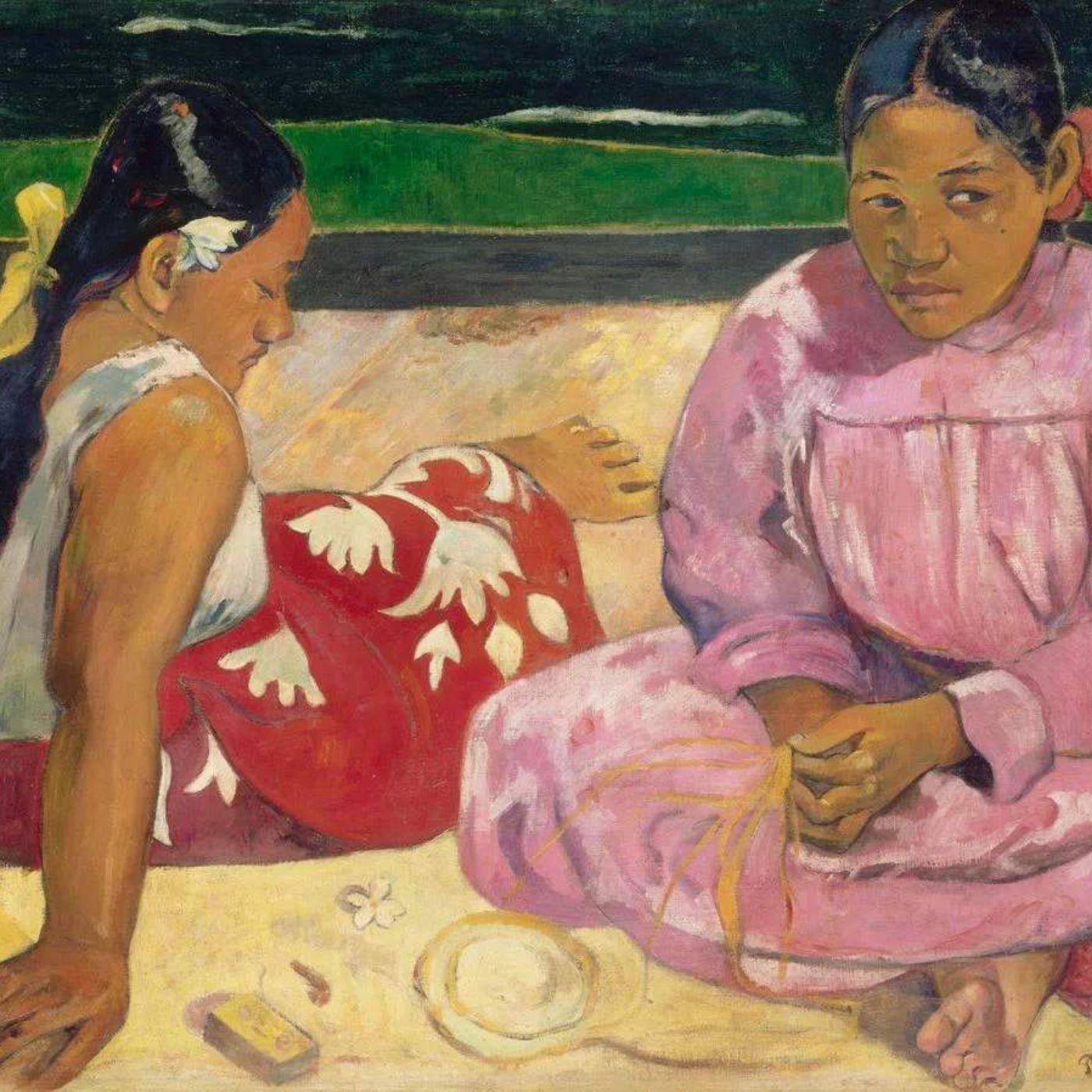
This winter is a time of brilliant colour and illumination in Canberra – the National Gallery of Australia (NGA) is presenting Gauguin’s World: Tōna Iho, Tōna Ao, a marvellous and major solo exhibition of the French Post-Impressionist artist, Paul Gauguin (1848–1903).
Mazda Australia is the Principal Sponsor of this exhibition, produced by the NGA in partnership with Art Exhibitions Australia (AEA) and the Museum of Fine Arts (MFA), Houston, USA, where it will be shown later in 2024.
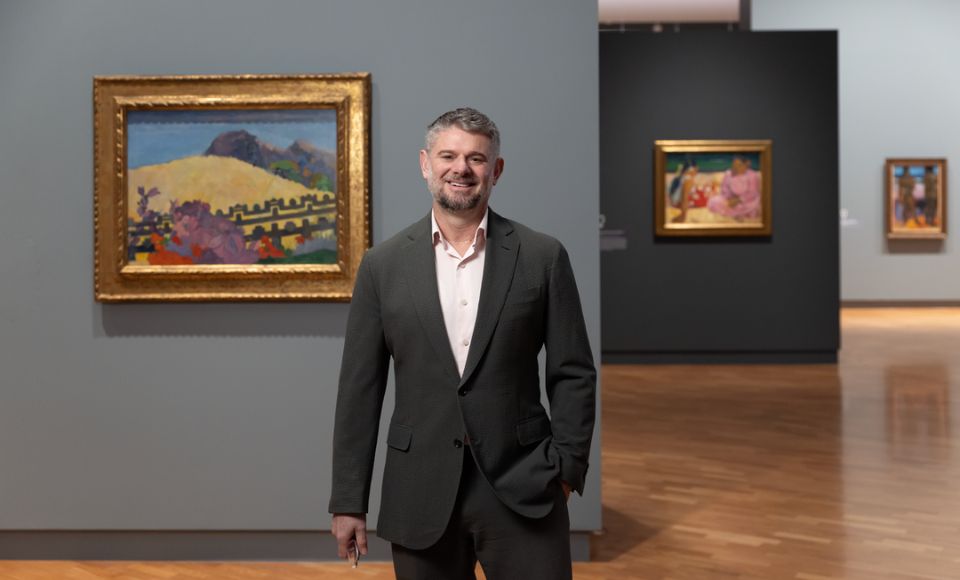
Installation view, Director Nick Mitzevich, winter exhibition Gauguin’s World: Tōna Iho, Tōna Ao, National Gallery of Australia, 2024. Photo: Sam Cooper.
I talked with the NGA Director, Dr Nick Mitzevich, in June when the last international artwork deliveries were arriving. He was clearly thrilled to see the exhibition plans close to fruition, saying, “It’s the most complex and most ambitious show we’ve ever mounted. We have borrowed from over sixty-five public and private collections around the world and that is a record for the NGA.”
With more than 130 works by Gauguin, this exhibition is also record-breaking in other ways – the first comprehensive solo exhibition of Gauguin in the Pacific / Moana region, and the first-ever solo exhibition of his work in Australia.
Nick says, “We take you on a journey from his formative works, informed by Impressionism. Gauguin was exhibited in five of the eight formal Impressionist exhibitions in Paris. We take you from early work in the 1870s, all the way through to his death at the turn of the twentieth century. It’s a complete overview of his career.”
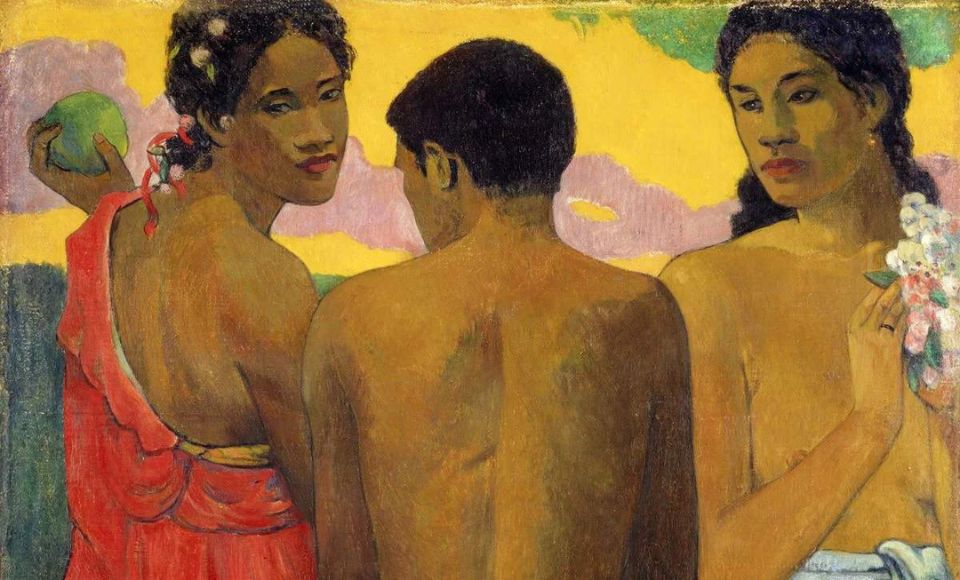
Paul Gauguin Three Tahitians (Trois tahitiens) 1899 oil on canvas 73 × 94 cm National Galleries of Scotland, Edinburgh. Presented by Sir Alexander Maitland in memory of his wife Rosalind 1960, NG 222
The exhibition features some of Gauguin’s best-known masterpieces, many created when he lived in French Polynesia for ten years over the late nineteenth and early twentieth centuries, first in Tahiti and then in the Marquesas Islands. You’ll see some of the oil paintings he created there, boldly using flat planes of strong and contrasting colours. His vivid paintings of French Polynesia are what he’s most popularly remembered for, but he created so much else that’s remarkable.
“Most people would only know Gauguin by his paintings,” says Nick. “However, he used ceramics, wood carving, drawing and printmaking as important ways of testing his ideas. So, you’ll see his paintings, and we’ve included his ceramics and his wood carvings as well as his works on paper.
“And because he was a great innovator, there’s a whole combination of different approaches to the mediums. Gauguin was never someone to rest on his laurels. He was always trying to push the evolution of artmaking in his own practice and the dexterity that he has, to become expert in all these fields of art, is shown in this exhibition.”
His works on paper in the exhibition include prints (mostly woodblock and zincograph), drawings including a preparatory study for his famed painting, Where do we come from? What are we? Where are we going? and some of his book-form illustrated writing (presented digitally).
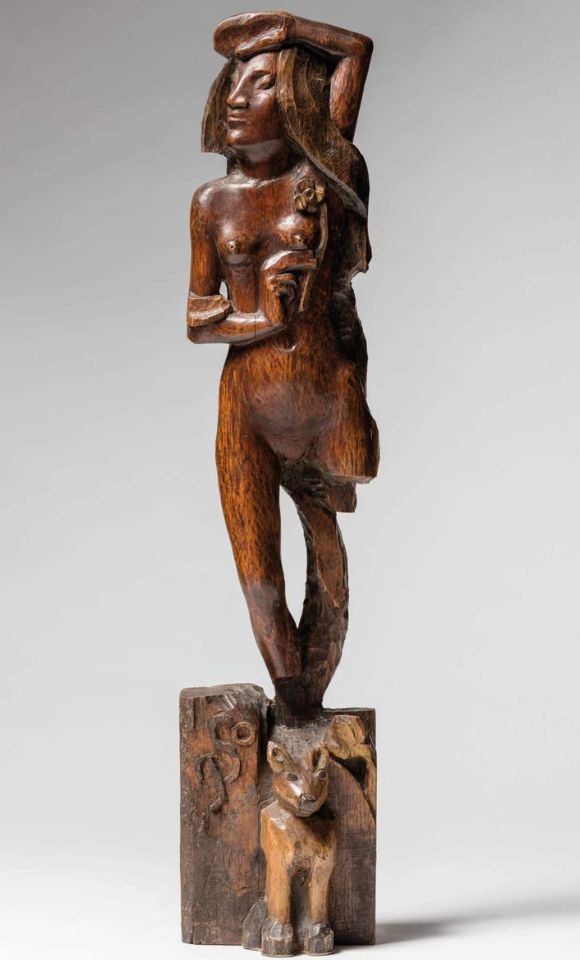
Paul Gauguin, Lust, 1890, Willumsens Museum, Frederikssund
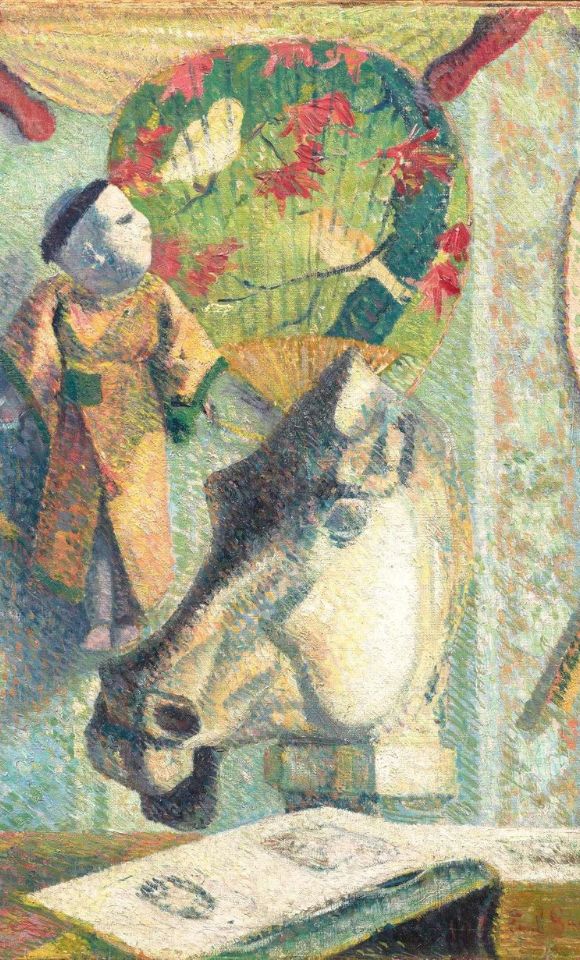
Paul Gauguin Still life with horse’s head (Nature morte a la tete de cheval) 1886 oil on canvas. Artizon Museum, Ishibashi Foundation, Tokyo, 22588
You’ll also see works created in France – Paris, Brittany and Provence – and works that incorporate elements from other world cultures that inspired him, Japan among them, sometimes even a fusing of multiple cultures in one work. So, the exhibition feels like a journey through place, as well as through a career fuelled by a powerful and versatile creativity, that began in 1873 when he took up painting in his spare time in his mid-20s, as a recently married stockbroker in Paris.
Nineteenth-century French Polynesian cultural material is presented too. Nick adds, “Gauguin was very influenced by his time in the Pacific, and his works draw heavily from the observations that he’s made there. The jewellery, the carved sculptures… such things were important reference points for him. So, we have also included some select works from the Pacific that draw out the influences that you see in Gauguin’s works.”
These objects from the Musée de Tahiti et des Îles in Tahiti, and the Musée du quai Branly in Paris, show some kinds of objects that Gauguin would have been familiar with. Among them are a fan, an ear ornament made from bone, wooden ceremonial bowls and a stone tiki.
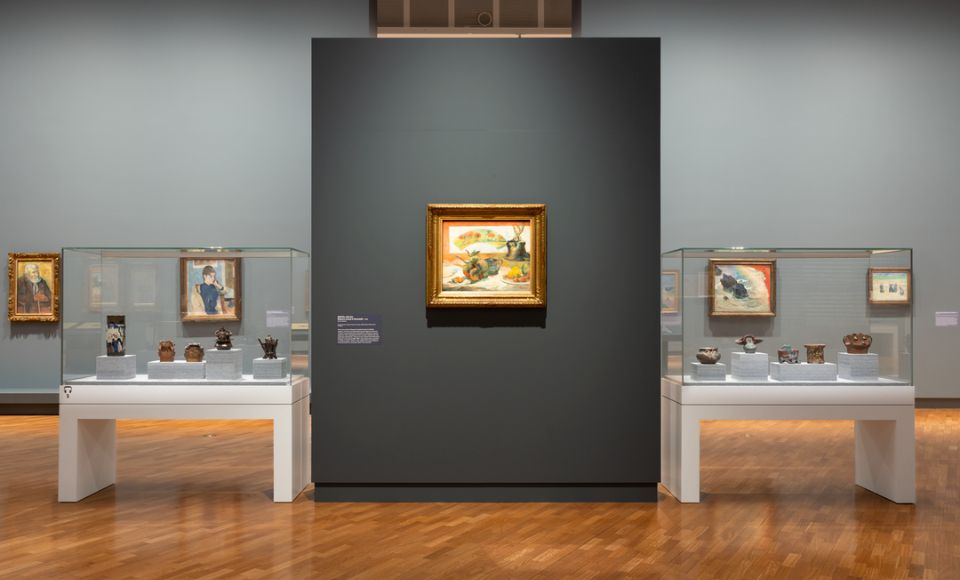
Gauguin’s World: Tōna Iho, Tōna Ao, installation view, National Gallery of Australia, 2024
The concept of the exhibition, guest curated by Henri Loyrette, was to mirror Gauguin’s introspection in his final years, in ill-health in the Marquesas Islands. Loyrette has said, “In the twenty months before his death, he continued to develop his art while, in his writings, he set out to review his career as a whole.”
It’s more than five years since the NGA came up with the idea to stage a Gauguin exhibition and began working on it with AEA. Sharing some of the exhibition’s own story, Nick says, “Henri was brought on board early. We knew that an exhibition of this ambition would need a world expert in nineteenth-century French art. And Henri, the former Director of the Musée du Louvre and of the Musée d’Orsay in Paris, was the man to match the ambition of this show.”
Loyrette is also an esteemed scholar of 19th-century French art who has curated major international exhibitions of other artists, including Edgar Degas, a contemporary and supporter of Gauguin.
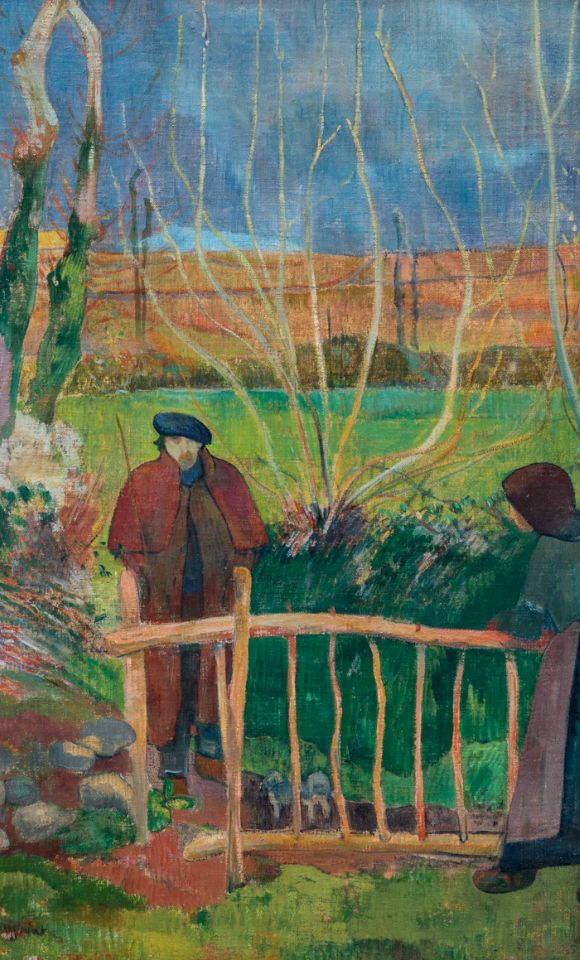
Paul Gauguin, Bonjour, Monsieur Gauguin, 1889, Hammer Museum, Los Angeles, gift of the Armand Hammer Foundation, the Armand Hammer Collection
Nick continues, “Art Exhibitions Australia brought the Museum of Fine Art in Houston into the partnership.” The expanded partnership allowed greater ambition, for a major survey of Gauguin’s art inevitably means feats of research, negotiation and logistics. “There’s not one collection in the world that has lots of Gauguin’s work.”
With over sixty-five lenders, more than 140 objects and numerous international artwork courier trips, this exhibition was, in Nick’s words, “incredibly expensive and complicated”. He is frank about sponsorship, saying, “Without a principal sponsor like Mazda Australia, it’s just not viable to bring these works to Australia.”
Mazda Australia is proudly the Principal Sponsor of this exhibition. According to Managing Director, Vinesh Bhindi; “The arts is a pivotal part of Mazda Australia’s focus, as we act on our promise to deliver joy not only through our cars but in society. We passionately believe that art inspires and energises the community, stirring emotion and encouraging reflection and debate.”
Mazda Australia partnered with AEA thirty years ago. Since increasing support to Principal Donor level twenty four years ago, Mazda Australia has played a key role in bringing some 40 major AEA exhibitions to various national and state institutions, seen by some five million total visitors.
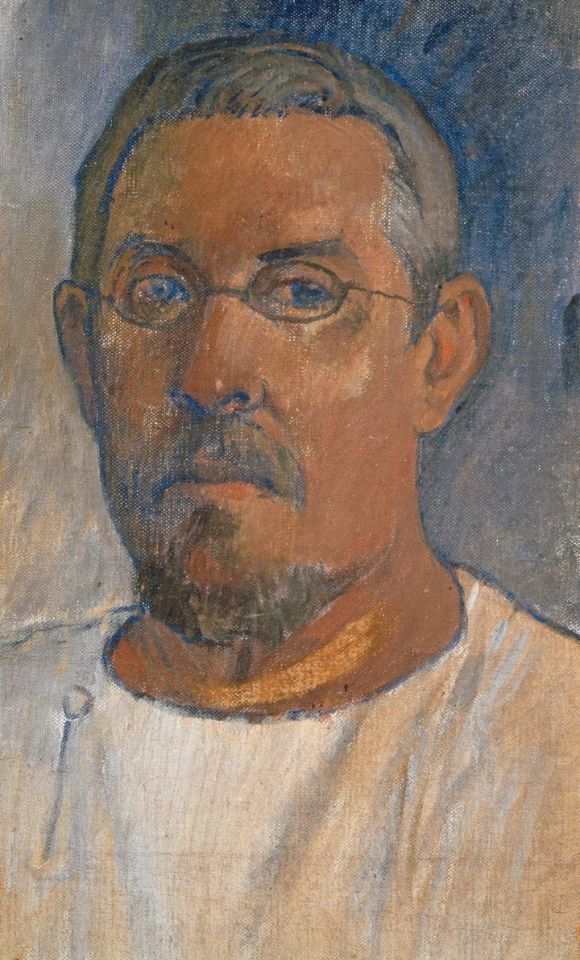
Paul Gauguin, Portrait of the artist by himself, 1903, Kunstmuseum Basel, bequest of Dr Karl Hoffmann 1945
Speaking for the NGA about such major international exhibitions, Nick says, “Our job is to bring extraordinary cultural things to Australia, and we do it with the support of the Australian government, our private sponsors like Mazda Australia and members of the public who buy a ticket, and we do it to make sure that Australians have access to the best art in the world in their own country.”
Gauguin’s importance as an artist is beyond doubt. “Gauguin made an incredible impact on art,” Nick adds. “He was an innovator, particularly with colour and composition, and he built on the legacy of the Impressionists to herald the modern era, and that legacy as being one of the most innovative artists that connected Impressionism and post-Impressionism as we moved into the twentieth century is unquestionable.”
Gauguin also influenced many other artists, including Picasso and Matisse. His influence endures as artists and others continue to respond to him, including in the Pacific / Moana.
Also, among the European artists of his time, Gauguin is unusual for having lived and worked in the Pacific. That makes his art particularly interesting to exhibit and reconsider in the Pacific today.

Paul Gauguin Tahitian women (Femmes de Tahiti) 1891 oil on canvas 69 × 91.5 cm Musée d’Orsay, Paris. Gift of Countess Vitali 1923, RF 2765
The NGA foresaw valuable opportunities and responsibilities arising from bringing a wide range of Gauguin’s works together. New readings of his work from contemporary perspectives would be possible and voices from the Pacific / Moana, including First Nations voices, could be elevated in the process. In bringing that to fruition, the NGA has been up-front that aspects of Gauguin’s life and work have created controversy, considered from contemporary viewpoints.
“In recent times, Gauguin’s personal behaviour has been questioned and we don’t shy away from that,” Nick says. “We like to think that art brings a great opportunity to widen our discussion and understanding of subjects, be they the social-cultural views of past times, and how they might be different from the ones we have today.”
The Tahitian words of the exhibition title were chosen by Hiriata Millaud, a linguist who heads the Archives in Tahiti and who has described these meanings: Tōna Iho for “Gauguin’s soul, spirit, heart, thought, ideas, opinions, views”, and Tōna Ao for “all what constitute and shape Gauguin’s world”.
It’s in what the NGA offers alongside the exhibition – the publication, public programs and podcast, in which more can be said than in exhibition wall texts, and in which the views of women from French Polynesia are strongly represented – that one discovers much more about Gauguin’s Tōna Iho, Tōna Ao, and his controversial legacy is addressed.
There, you can find out some of the complexities, contradictions, ironies and mysteries of the fascinating Gauguin story, as details about his life, family and art, and French and Polynesian culture in his lifetime are provided with thoughtful commentary.
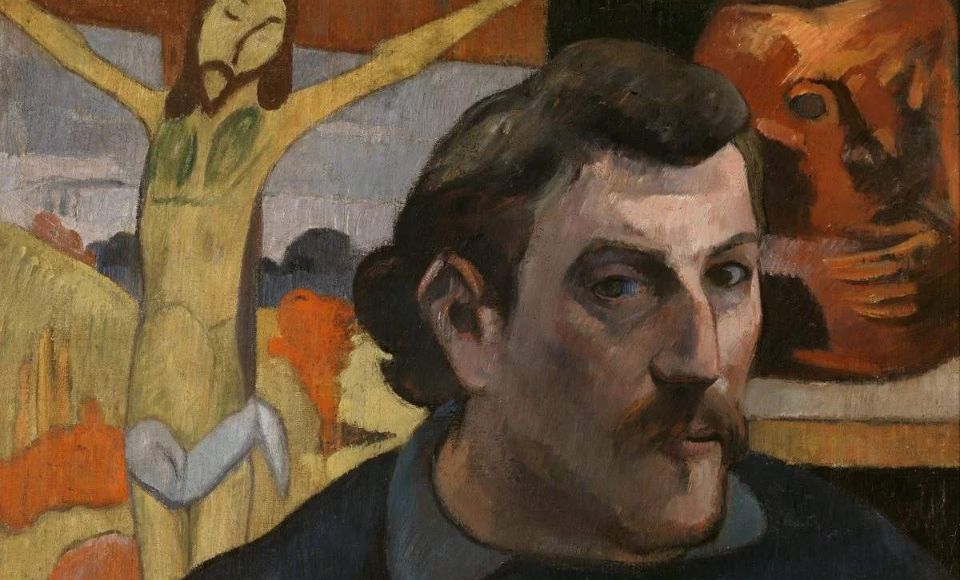
Paul Gauguin, Portrait of the artist with ‘The yellow Christ’ (Portrait de l’artiste au ‘Christ jaune’), 1890–91, Musée d’Orsay, Paris, purchased with the participation of Philippe Meyer and Japanese sponsorship coordinated by the daily Nikkei 1993. Photo: (c) GrandPalaisRmn (musée d'Orsay) / René-Gabriel Ojeda
The more details you know, the more it becomes clear that criticising Gauguin in terms of notions of colonialism, cultural appropriation, or exploitation of women is not as straightforward as some currently popularised views of Gauguin would have you believe.
Gauguin was extraordinary in so many ways, but in aspects of his life that have been especially controversial – living away from his wife and children to work elsewhere – having sexual live-in relationships with young Polynesian women, the youngest only 13 years old – he was within the social norms of European and of Polynesian culture in his times, which are very different to those of today.
Loyrette has said, “Like many other historic and contemporary artists, Gauguin’s life and art have increasingly and appropriately been debated here and around the world. In today’s context, Gauguin’s interactions in Polynesia would not be accepted and are recognised as such.”
Adding context, Mazda Australia’s Marketing Director, Alastair Doak says, “As a proud partner of AEA, we are absolutely convinced by their commitment to ensuring the issues relating to Paul Gauguin are met head-on and form an important and considered part of the exhibition. The NGA and the AEA have spent years ensuring that the exhibition is as much an opportunity for education and contemporary perspectives as it is about celebrating artwork.”
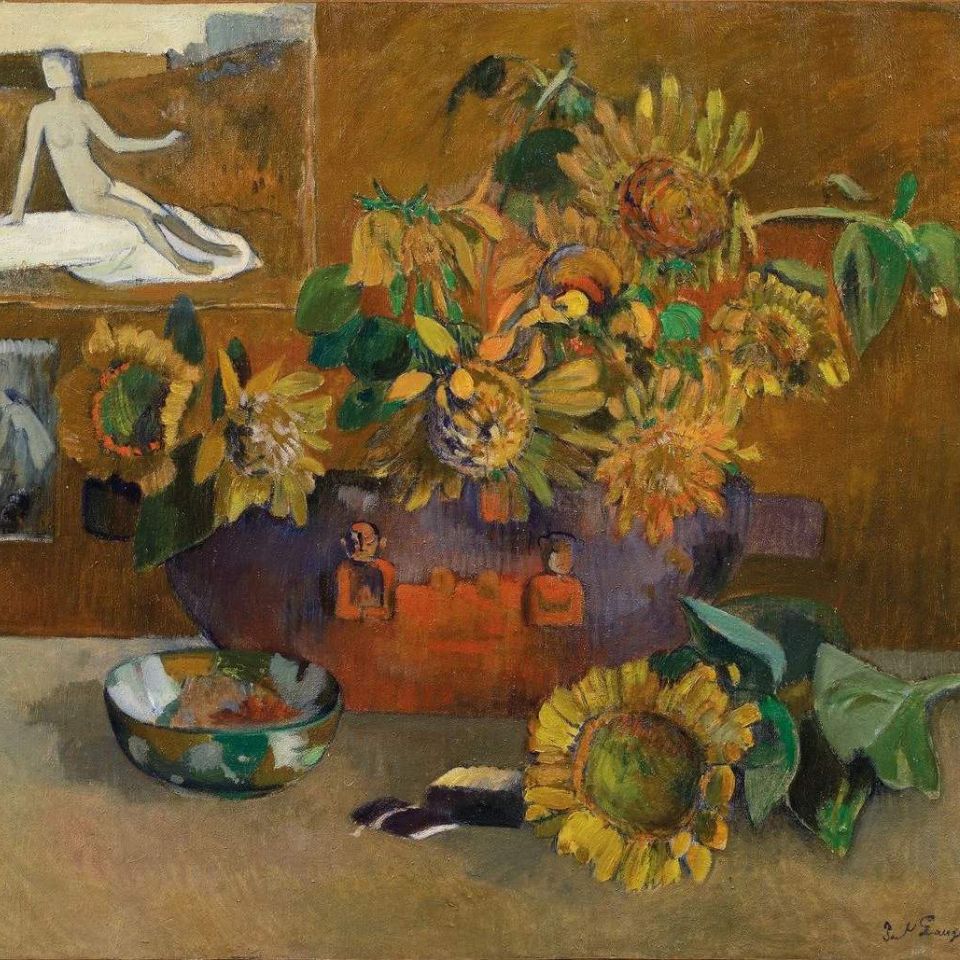
Paul Gauguin, Still life with Hope, 1901, private collection, Milan © Paolo Vandrasch
With more than 150 colour illustrations and extensive text, the exhibition publication offers rich insight. Edited by Loyrette, it includes his major new essay on Gauguin and contributions from four other authors whose different areas of specialisation allow other contemporary perspectives – Nicholas Thomas, Vaiana Giraud, Norma Broude and Miriama Bono, most of whom talked as part of the exhibition symposium, viewable on the NGA’s YouTube channel. Thomas’s 2024 book, Gauguin and Polynesia is a further knowledge source.
Today’s ‘cancel culture’ comes up for discussion in the publication and in The Gauguin Dilemma, the podcast series with interviews developed for the NGA by the Samoan-Australian journalist Sosefina Fuamoli. In both, there’s a persuasive argument against it, in favour of a culture of continued listening for nuanced understandings.
For Norma Broude, art historian and feminist scholar, that includes more ‘listening’ to Gauguin himself, over the full breadth of his writings. Gauguin’s grandmother was Flora Tristan (1803-1844), the pioneering socialist and feminist. In the exhibition publication, Broude conveys some of the influences on Gauguin of Tristan’s ideas. She also points out that the popularisation of past (‘masculinist’) readings of Gauguin, where feminist elements of Gauguin’s thinking were overlooked, has lent strength to those who argue for his ‘cancellation’.

Dress rehearsal for SaVĀge K’lub: Te Paepae Aora’i – Where the Gods Cannot be Fooled opening weekend activations, National Gallery of Australia, 2024
Beside the entrance to Gauguin’s World is an installation by the Pasifika art collective, SaVĀge K’lub. The Aotearoa / New Zealand artist, poet and scholar Rosanna Raymond, MNZM, aka Sistar S’pacific, co-founded it in 2010 and leads this latest, unique K’lub space for the NGA – Te Paepae Aora’I – Where the Gods Cannot be Fooled.
It gives a place and voice within the NGA to artists from the Pacific / Moana today. Nick says, “It’s an exhibition of a variety of mediums. There are works by the artists of the club, and Rosanna has selected works from the NGA’s collection as well. So, it’s a juxtaposition of a whole series of artists from the Pacific.”
“And it doubles as a performative space, in which there will be a series of performances of song, dance and spoken words.” Rosanna and fellow multidisciplinary artists from the collective will ‘acti.VĀ.te’, exploring ideas of hospitality, culture and identity through performance.
It’s a vibrant, unmissable space in which you’re invited to gather, look and listen, that’s present, in Nick’s words, as “an important complement to the Gauguin exhibition”.
When seeing the marvellous Gauguin’s World: Tōna Iho, Tōna Ao, take the time to explore all that’s offered alongside it, for an experience more illuminating and memorable.
Gauguin’s World: Tōna Iho, Tōna Ao is open from now until 7 October, 2024. The first 200 Mazda owners to visit on the weekend of the 20th and 21st July can enjoy complimentary entry to the exhibition by presenting their Mazda car key at the National Gallery entrance.

The all-new Mazda CX-70 and CX-80 on display in a world-first preview at the NGA, Canberra
*Valid only on 20 and 21 July 2024. One ticket per key presented. Limited to 200 Mazda customers each day